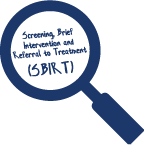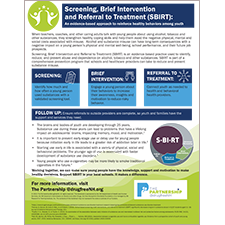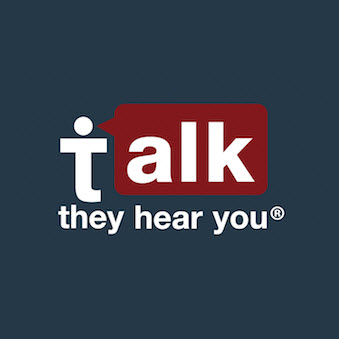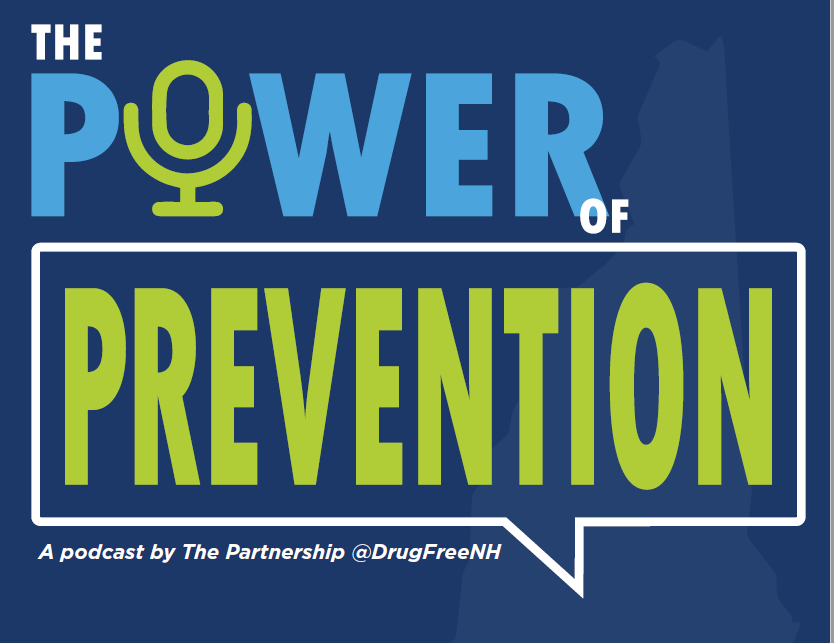Cannabis Facts
The landscape for cannabis use has been changing in and around NH with increased legal access to recreational and therapeutic forms of cannabis. These changes have caused confusion about the risks and harms associated with cannabis use. Learn how you can help educate yourself, family members and friends.
Important Note: The Partnership uses the term cannabis to refer to the plant and all types of derived products such as—vape cartridges, edibles, smokable “weed” or “pot”, oils and tinctures. We are not using the term marijuana on most of our resources because this term has a complicated past that was slanderous towards certain people. It is, however, important that the language we use in some instances is accessible to the audience that we are trying to reach and we understand that marijuana is a commonly utilized term for products that contain the form of THC (Delta 9) that provides a euphoric affect or intoxication.
 Understanding the Challenge
Understanding the Challenge
Over the last decade, laws around cannabis use and possession have changed in NH. In 2013, therapeutic cannabis was legalized. Regulated Alternative Treatment Centers provide cannabis to individuals who have received a medical recommendation from their health care provider. In 2017, cannabis was decriminalized. While cannabis is still illegal, individuals over the age of 18 found in possession of up to three-quarters of an ounce of cannabis receive a civil violation punishable by a $100 fine instead of the previous law’s punishment of up to one year in jail.
During the same period of time, attitudes and beliefs toward cannabis use have changed significantly. These changes include:
A substantial decrease in the perception of risk associated with cannabis use
A decline in perceived parental disapproval of its use in high school age youth
An increase in cannabis use among adolescents and young adults
In 2015, NH high school students reported 22.2% were currently using marijuana while in 2019, students who reported current use jumped to 26.1%. Students who used synthetic marijuana also increased from 5.6% to 8.6% during 2017-2019. These statistics are indicative of marijuana being seen as a harmless substance because its use is so widespread, and it is easy to access. Equally concerning is knowing that when protective factors (perception of risk and parental disapproval) decline, risk increases exponentially.
Understanding the negative consequences of cannabis use will keep you, your family members, your friends safe.
 Cannabis, also known as marijuana, is a psychoactive drug from the cannabis plant. It is considered a gateway drug to other legal and illegal substances and is addictive. Cannabis is not harmless. There are many serious consequences of cannabis use on the developing brain of youth and young adults (the brain is developing until approximately age 25), and even on adults who use. Cannabis use can have short- and long-term effects on brain function, physical movement, and mood and relationships.
Cannabis, also known as marijuana, is a psychoactive drug from the cannabis plant. It is considered a gateway drug to other legal and illegal substances and is addictive. Cannabis is not harmless. There are many serious consequences of cannabis use on the developing brain of youth and young adults (the brain is developing until approximately age 25), and even on adults who use. Cannabis use can have short- and long-term effects on brain function, physical movement, and mood and relationships.
Cannabis has short-term effects, which include intoxication/high; increased heart rate; impaired body movement; difficulty with thinking and problem-solving; impaired memory; altered senses; altered sense of time; changes in mood; and hallucinations (when taken in high doses).1
Cannabis use affects the brain, specifically the parts of the brain responsible for memory, learning, attention, decision making, coordination, emotions, and reaction time.2 This can impact relationships, school and work performance, and physical and emotional safety.
Cannabis use disrupts brain development. Teens and young adults who use cannabis regularly may not do as well in school and may have trouble remembering things.2 The effects of cannabis use may last a long time or even be permanent.
Cannabis use is associated with mental illness. Young people who regularly use and those with a family history of certain mental health issues are more vulnerable to the negative effects of use. Cannabis use has been linked to depression and anxiety, and suicide among teens; however, it is not known whether this is a causal relationship or simply an association.3 People who use cannabis are more likely to develop temporary psychosis and long-lasting mental disorders, including schizophrenia.4
Cannabis use in adolescence is associated with other high risk behavior. There is evidence that adolescents who use cannabis are more likely to engage in other risky behaviors, including risky sexual behaviors; use of other substances; driving while intoxicated or riding with a driver who has been drinking. This can lead to poorer educational outcomes, high absenteeism, and difficulty with future unemployment.5
Cannabis use is addictive. About 1 in 10 cannabis users will develop a substance use disorder. For people who begin using before the age of 18, that number rises to 1 in 6.6
Cannabis smoke is harmful. Many of the same toxins, irritants, and carcinogens that are found in tobacco smoke are also found in cannabis smoke. Smoking cannabis can harm lungs tissues and cause scarring.7
Cannabis use during pregnancy can be harmful to the baby’s health.8 The chemicals in cannabis transfer from the pregnant parent to the baby. Babies exposed to cannabis use during pregnancy have higher rates of learning, attention and behavior challenges like attention deficit hyperactivity disorder later in life.9

The proven prevention strategies for cannabis use are similar to the prevention strategies for other substances. When teachers, coaches, and other caring adults talk with young people about using alcohol, tobacco, cannabis and other substances, they strengthen healthy coping skills and help them avoid the negative physical, mental and social costs associated with misuse. Alcohol, tobacco, cannabis and other substance misuse can have long-term consequences with negative impact on a young person’s physical and mental well-being, school performance, and their future job prospects. There are three prevention strategies below: having honest, caring, and informed conversations; safe use and storage, and universal screening of substance use and mental health well-being.
Honest, Caring, and Informed Conversations with Youth
 Talk with young people, family members and friends in your life about the negative consequences of using cannabis. You can influence their attitudes and beliefs around use and prevent problems. Learn more about the risks so you can provide honest direct answers when talking with your child about cannabis use. Talking about the risks is an important prevention strategy.
Talk with young people, family members and friends in your life about the negative consequences of using cannabis. You can influence their attitudes and beliefs around use and prevent problems. Learn more about the risks so you can provide honest direct answers when talking with your child about cannabis use. Talking about the risks is an important prevention strategy.
Talk regularly and routinely about not using substances unless they are recommended by a health care professional for a physical or behavioral health problem.
Teach refusal skills, so your child knows how to say “no”.
Stress your main concern is their health and safety and you are available to help if needed
Explore with your child why their peers and other young people use cannabis. Share the consequences and your expectations. Stay calm and avoid lecturing during these conversations.
Talk with your child about healthy forms of coping. Many young people say they use cannabis to relieve their stress and anxiety.
Explain to your child that the marketing of cannabis use in movies, media and music is not an accurate depiction of the harm it can cause.
Safe Use and Safe Storage
 Practice Safe Use and Storage. Whether you use cannabis for therapeutic or personal reasons, it is important to safely use and store all products.
Practice Safe Use and Storage. Whether you use cannabis for therapeutic or personal reasons, it is important to safely use and store all products.
Safe Use
- Follow your provider’s recommendations for therapeutic use.
- Avoid using cannabis with alcohol and other substances.
- Use only cannabis from a known source. Cannabis, like other substances, is being laced with other dangerous substances, leading to harmful effects and overdose.
- Avoid smoking cannabis around children. Second-hand smoke gets into their system, too.
- Avoid using cannabis while caring for a baby or young children or while breastfeeding.
- Plan for a safe driver while using cannabis.
Safe Storage
- To avoid accidental poisoning, make sure you store all cannabis products in child-safe containers and lock them away like you would any other medication. Call 1- 800-222-1222 or text POISON to 85511, 24 hours/day for questions or concerns about accidental exposure.
- Keep cannabis in child-safe packaging and ensure the content is labeled. The original packaging is best.
- Safe storage for young children may be different than for older children and teenagers. Ensure that you adjust storage with the age of the children and guests in your home.
Universal Screening of of substance use and mental health well-being
 Support Universal Screening in schools and / or pediatrician offices. Screening, Brief Intervention and Referral to Treatment (SBIRT) is an evidence-based practice used to identify, reduce, and prevent abuse and dependence on alcohol and other substances. SBIRT is part of a comprehensive prevention program that schools can implement to reduce and prevent substance misuse. By supporting SBIRT in your schools and communities, you can help your young people make healthy choices. SBIRT provides early identification, referral and support services. To learn more about SBIRT, visit SBIRTNH.org
Support Universal Screening in schools and / or pediatrician offices. Screening, Brief Intervention and Referral to Treatment (SBIRT) is an evidence-based practice used to identify, reduce, and prevent abuse and dependence on alcohol and other substances. SBIRT is part of a comprehensive prevention program that schools can implement to reduce and prevent substance misuse. By supporting SBIRT in your schools and communities, you can help your young people make healthy choices. SBIRT provides early identification, referral and support services. To learn more about SBIRT, visit SBIRTNH.org

Spotlight Factsheet: Cannabis Use and Young People: What Parents and Caregivers Can Do
As a parent or caregiver, your opinion shapes your child’s attitude and beliefs about cannabis use. This factsheet explains why cannabis is such a popular substance among youth and offers ways you can help your child avoid problematic use.

Spotlight Factsheet: Cannabis Use While Pregnant and Breastfeeding
Whether you use therapeutic or recreational cannabis, there are few things you should know about cannabis use during pregnancy and while breastfeeding. This factsheet provides a balanced perspective on what we know and don’t know about cannabis use during this special time, so you can decide what’s right for you.

Spotlight Factsheet: General Facts About Cannabis Use
Cannabis is the most commonly used addictive drug, after tobacco and alcohol, and one of the most misunderstood. This factsheet provides science-based facts, not bias or hype, about cannabis.

Learn how your school and other community settings can strengthen healthy coping skills and identify risky behaviors early among youth. Screening, Brief Intervention and Referral to Treatment (SBIRT) is part of a comprehensive prevention program.
Whether you’re just living healthy, planning to become pregnant, pregnant, or breastfeeding, we have research-based resources on alcohol and marijuana use during pregnancy to support you.

The “Talk. They Hear You.” campaign aims to reduce underage drinking and substance use among youths under the age of 21 by providing parents and caregivers with information and resources they need to address alcohol and other drug use with their children early. There are also Partner Resources, many of which are customizable for your needs.

2Centers for Disease Control and Prevention (CDC). Marijuana and Public Health: Health Effects. February 27, 2018. https://www.cdc.gov/marijuana/health-effects.html (accessed November 22, 2021)
3Part 1: The Connection Between Substance Use Disorders and Mental Illness | National Institute on Drug Abuse (NIDA) (Accessed June 7, 2021)
4Centers for Disease Control and Prevention (CDC). Marijuana and Public Health: Health Effects. February 27, 2018. https://www.cdc.gov/marijuana/health-effects.html (accessed November 22, 2021)
6https://www.cdc.gov/marijuana/nas/adolescents.html (Accessed June 22, 2021)
7Centers for Disease Control and Prevention (CDC). Marijuana and Public Health: Health Effects. February 27, 2018. https://www.cdc.gov/marijuana/health-effects.html (accessed November 22, 2021)
8Centers for Disease Control and Prevention (CDC). What You Need to Know About Marijuana Use and Pregnancy. 2017. https://www.cdc.gov/marijuana/pdf/marijuanapregnancy-508.pdf (accessed November 22, 2021)
9https://mothertobaby.org/fact-sheets/marijuana-pregnancy/ (Accessed June 7, 2021)

